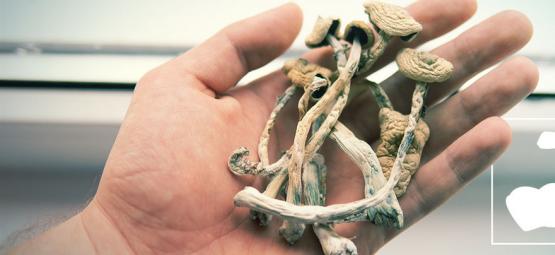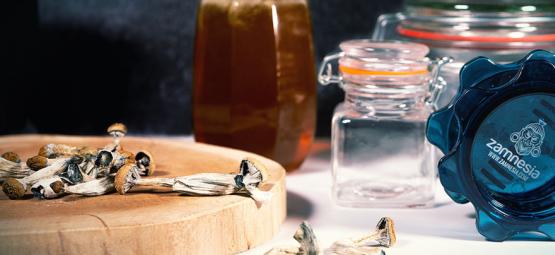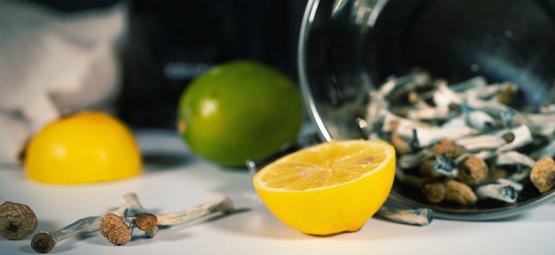What Is Panaeolus Cyanescens?
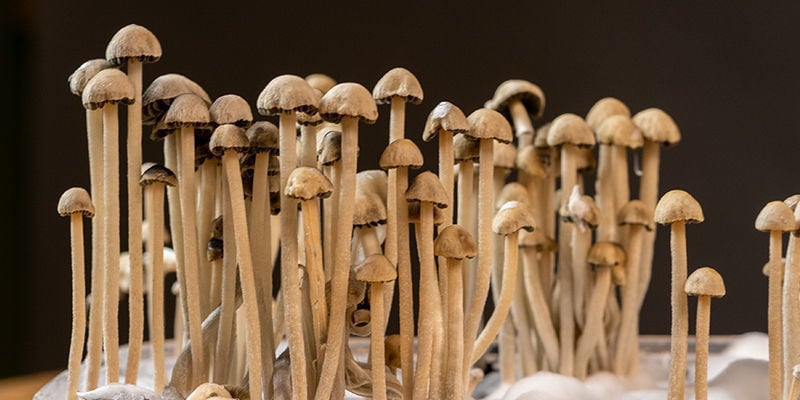
Blue meanies get their name due to their blue colouration and potent character. But so long as you know what you're dealing with, these powerfully psychedelic fungi aren't mean at all—they just demand respect!
Panaeolus cyanescens, often referred to as "blue meanies” or “Copelandia cyanescens”, is a potent psilocybin-containing mushroom species—some say the most potent. Indeed, this species is highly sought after for its strong psychedelic properties, which make it a special experience for seasoned psychonauts. Not only is this species especially strong, but the quality of the high is often revered too.
Native to tropical and subtropical regions, Panaeolus cyanescens grows naturally in areas with a warm climate, often found in dung-enriched soil, similar to the more common Psilocybe cubensis. In this article, we look in depth at all you need to know about Panaeolus cyanescens.
Getting to know Panaeolus cyanescens
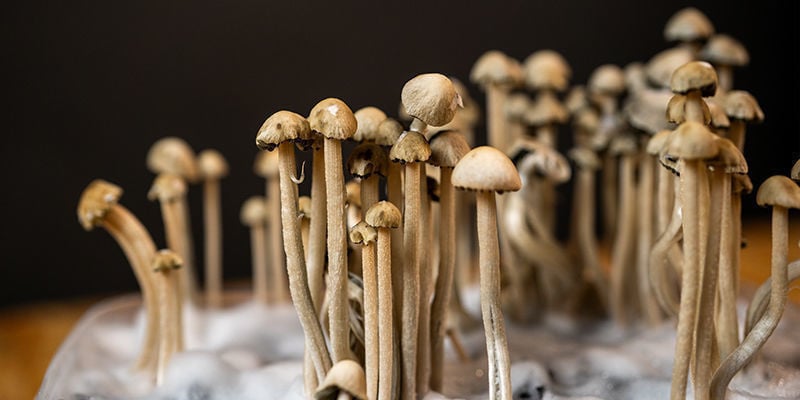
Panaeolus cyanescens is a small but mighty mushroom, packing a significant punch despite its diminutive size. Gram for gram, this is thought to be the strongest psilocybin-containing mushroom on the planet. This species belongs to the Panaeolus genus and is known for its distinct and unmistakable blue bruising when handled—indicative of its psilocybin content, as this compound turns blue when it oxidises.
Although this species grows mostly in the tropics and subtropics, it has been found as far north as Scotland too. For the most part, Panaeolus cyanescens thrives in warm, moist habitats where it has access to plenty of water. Like many psilocybin mushrooms, its preferred substrate is dung, and in natural habitats it will be found growing almost exclusively in the excrement of herbivores, or the fertile soils where such herbivores live.
Which compounds are in Panaeolus cyanescens?
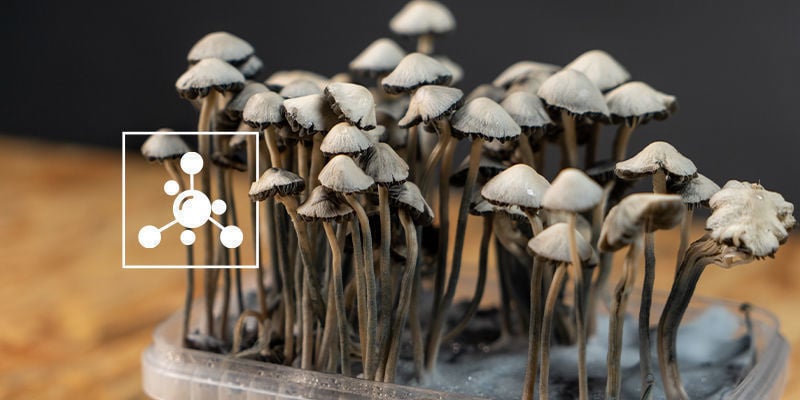
The primary compounds responsible for the psychoactive effects of Panaeolus cyanescens are psilocybin and psilocin. Psilocybin itself is a prodrug that must convert into psilocin in order to exert psychedelic effects. In fresh specimens, psilocin is present in higher concentrations compared to psilocybin, though this changes when the mushrooms are dried. When exposed to acid, often in the stomach, psilocybin then converts back into psilocin and exerts its effects.
These compounds belong to the tryptamine class and are known for their ability to alter perception, mood, and thought patterns. Psilocin is serotonergic, meaning it acts on serotonin receptors (5HT2A in this case) in the brain to produce psychedelic effects.
Other compounds found in Panaeolus cyanescens include:
- Baeocystin
- Norbaeocystin
- Aeruginascin
These additional compounds may also contribute to the overall psychoactive experience, although psilocybin and psilocin are the primary active ingredients. Little research has been conducted into the possible effects that these other alkaloids may have on the overall experience, although it is assumed that they have some influence.
How to identify Panaeolus cyanescens
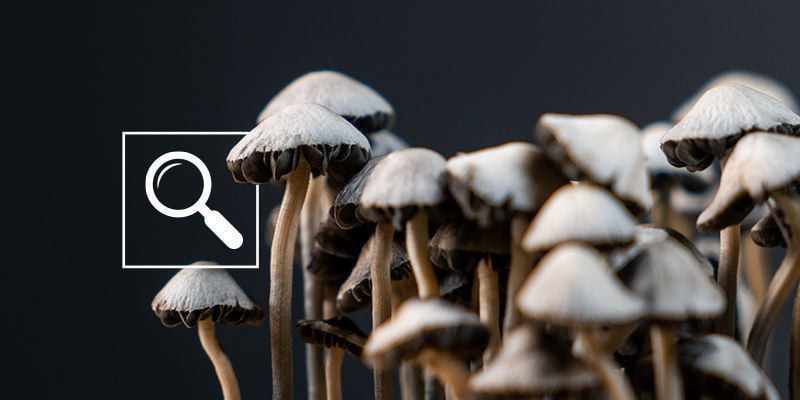
Identifying Panaeolus cyanescens can be tricky due to its resemblance to other mushroom species. As such, you should always be extremely careful if foraging for mushrooms in the wild. We all know that some species are fatally toxic, so you should always go picking with someone who knows what they’re doing before attempting it on your own.
Several key characteristics can help distinguish Panaeolus cyanescens:
- Cap: The cap is small, usually 1.5–4cm in diameter, and dry. When immature it will first appear as hemispheric, eventually expanding to a more convex shape. Young caps begin as light brown and fade to off-white or light grey at maturity, which is when you should aim to pick them.
- Gills: The gills are dark brown to black, tightly spaced, and only attached to the underside of the cap, not to the stem. When identifying mushrooms, the gills are a very important place to check, as caps and stems can sometimes be deceptive.
- Stem: The stem is slender and tall, ranging from 7–12cm in height. Some bluish colouration will often be visible, and will become especially pronounced when bruised.
- Spore print: The spore print is black, which is a distinctive feature for identification. That being said, if you pick them from the wild and intend to eat them, you may not take a spore print, so you shouldn’t rely on this for identification.
- Habitat: Panaeolus cyanescens is typically found in tropical and subtropical regions, growing in manure or enriched soil.
Copelandia cyanescens vs Psilocybe cyanescens
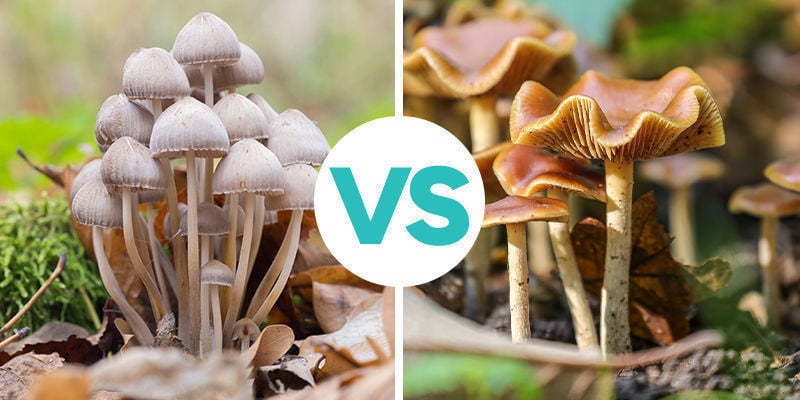
While both Copelandia cyanescens (Panaeolus cyanescens) and Psilocybe cyanescens are psilocybin-containing mushrooms, they differ in several ways, and knowing these differences is absolutely essential—for two reasons. First, if you go out picking, you need to know exactly what you’re looking for. Second, as Copelandia cyanescens are so potent, it’s crucial to know which you are taking. Take a Psilocybe cyanescens-sized dose of blue meanies and you might be in for quite the night, which, if you’re not prepared for it, could be pretty overwhelming!
- Appearance: Psilocybe cyanescens, also known as "wavy caps", develops wavy-edged caps that are caramel to chestnut brown, whereas Panaeolus cyanescens has more conical or bell-shaped caps. Blue meanies are also tall and whitish, whereas Psilocybe cyanescens grow in large clusters of caps, with little in the way of stems.
- Potency: Panaeolus cyanescens is generally more potent than Psilocybe cyanescens, although both are unusually strong. You shouldn’t use potency as an identification technique though!
- Habitat: Panaeolus cyanescens prefers tropical and subtropical climates, often growing in dung, while Psilocybe cyanescens is commonly found in temperate regions, thriving in wood chips, rotting wood, and mulch. What’s more, Psilocybe cyanescens mushrooms are unusual in that they thrive in very cold weather, emerging at much lower temperatures compared to other mushrooms, including Copelandia.
Are all Panaeolus hallucinogenic?
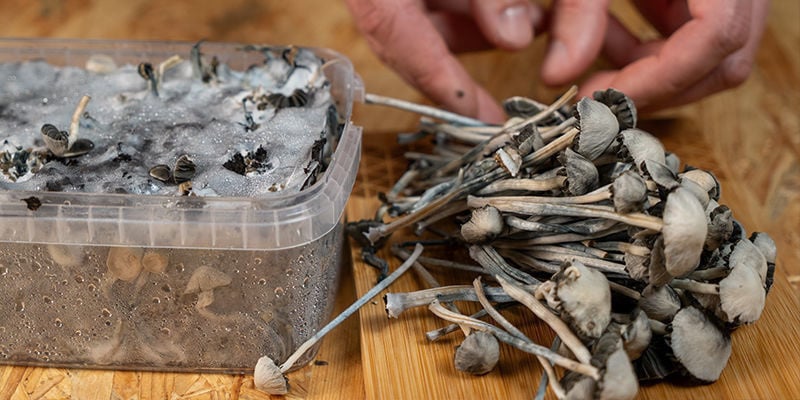
No, not all Panaeolus species are hallucinogenic. In fact, most hallucinogenic mushrooms fall under the Psilocybe genus, and Panaeolus species are an outlier in this regard. While Panaeolus cyanescens is known for its high psilocybin content, other species within the genus may not contain significant (or any) amounts of psychoactive compounds, meaning they won’t get you high. But it's crucial to accurately identify mushrooms before consumption, as some non-hallucinogenic species can be toxic and may cause serious health issues if consumed.
While not sufficient for identification, it can be helpful to know that if a mushroom doesn’t stain blue when bruised, it does not contain psilocybin/psilocin.
Effects of Panaeolus cyanescens

The effects of Panaeolus cyanescens can vary based on dose, individual physiology, and the environment in which they are consumed. However, what remains common among this species is that the effects are incredibly strong, meaning that all the usual psychedelic effects will be significantly amplified. Common effects include:
- Euphoria: A profound sense of happiness, well-being, and presence. The past and future can dissipate, with the present seeming eternal and infinitely inviting.
- Visual and auditory hallucinations: Enhanced colours, patterns, and sounds are a common and very pleasurable feature of the psilocybin high. Moreover, especially at higher doses, objects will change shape and perception will change significantly. However, true hallucinations—of things that are not really present—are rare and shouldn’t be an effect of this drug.
- Altered perception of time and space: Time may appear to slow down or speed up (but usually the former), and spatial awareness can be distorted. This can make even the simplest tasks seem almost impossible, meaning that you should prepare well and ensure that you have everything to hand and nothing to do once you’re under the effects of these shrooms.
- Spiritual experiences: Many users report feeling a deep connection to nature, the universe, and themselves. With Copelandia shrooms this is especially true due to the sheer amount of psilocybin contained in them.
- Increased creativity: Enhanced thought patterns and new perspectives are a common effect of these shrooms, and they are also well-suited to meditation and healing.
Common side effects
Side effects are very common with magic mushrooms, however in most cases they should be mild and easily manageable.
They include:
- Nausea
- Anxiety or paranoia
- Dizziness
- Changes in heart rate (with shrooms, this should not be dangerous)
How to dose Panaeolus cyanescens
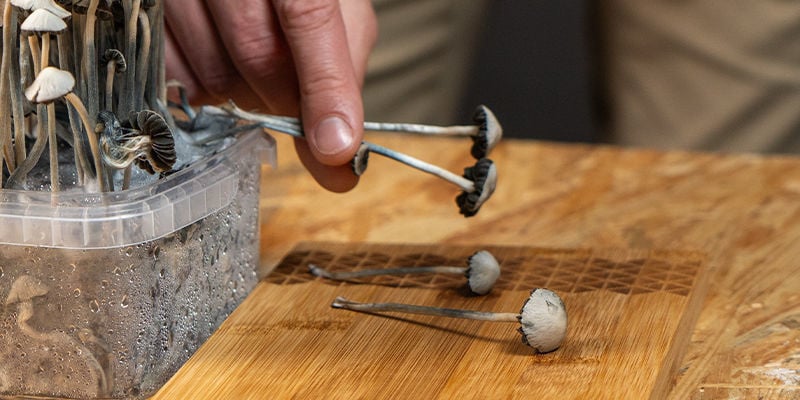
Dosing Panaeolus cyanescens requires caution due to its high potency. While it is always true of new drugs that you should start low and slow, it is especially true of these shrooms. Even seasoned users used to huge doses of cubensis can find themselves caught off guard with blue meanies. Here are some general guidelines for dosing Copelandia cyanescens:
- Microdose (<0.1 grams): Subtle effects, suitable for enhancing creativity and mood without significant perceptual changes.
- Low dose (0.2–0.5 grams): Mild psychoactive effects, including slight visual and auditory distortions with some bodily sensations and changes in thought patterns.
- Moderate dose (0.5–0.7 grams): Noticeable psychedelic experience with strong visual and auditory hallucinations, bodily effects, and distorted thought patterns.
- High dose (0.7–1.25 grams): Intense psychedelic experience with profound visual and auditory effects, often leading to spiritual or mystical experiences. Only suited to very safe environments and experienced users.
- Heroic dose (1.25+ grams): Extremely intense effects and total inability to do almost anything—not recommended for inexperienced users.
How to grow Panaeolus cyanescens
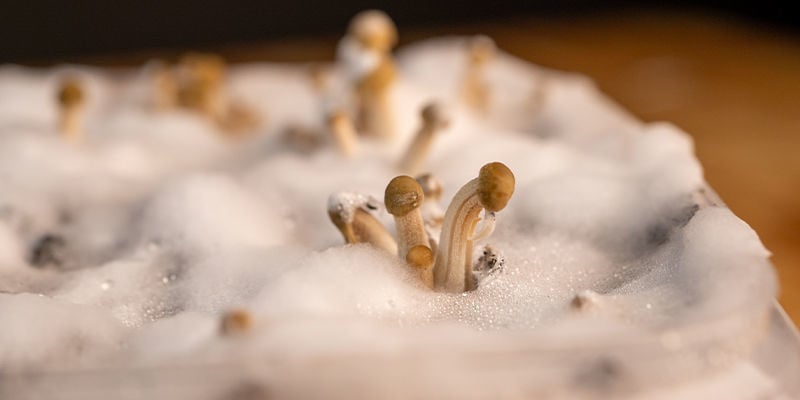
Growing Copelandia cyanescens at home is more challenging than cubensis, but it is still quite possible. For ease, we recommend starting with a grow kit, which comes already colonised and just needs to be opened and tended to as it grows. Copelandia spores are not very aggressive colonisers, so substrates will often become contaminated.
But if you want to grow from scratch, it is possible. To make it work, you will need to operate in an ultra-clean environment and not cut any corners. However, the substrate and conditions in which these shrooms grow are very similar to cubensis, so growing them will be familiar to anyone who has grown psilocybin shrooms before. And if not, the steps are not more complex—you just need to ensure that you really do them properly.
Unless using a grow kit, these shrooms are not recommended for beginner growers due to the contamination risk.
Shroom Shop
Zamnesia's Shroomshop offers an extensive selection of mushroom cultivation supplies, including spore prints, liquid cultures, grow kits, and much more.
Harness the power of Panaeolus cyanescens
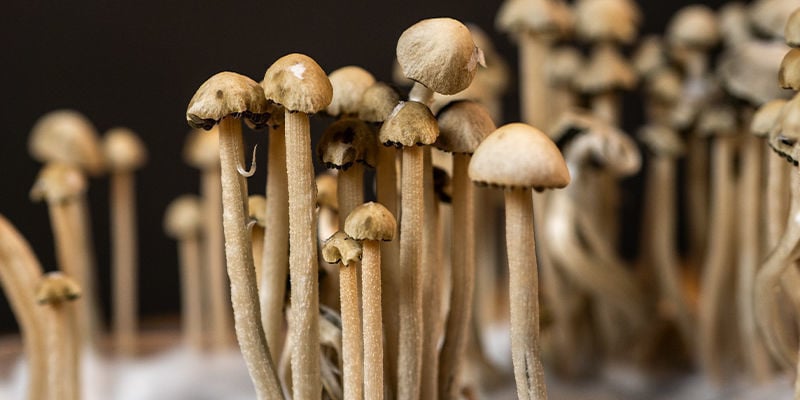
These magic mushrooms are considered by many to be the most potent in the world, and they are not for the faint-hearted. Where other species of shroom can induce a light and easy experience, these are far more likely to induce a full-blown psychedelic experience more akin to acid or DMT (though still distinctly shroomy). That is not to put people off, not at all, but merely to warn people of what they’re in for if they use Panaeolus cyanescens.
For experienced users looking for something to take things up a notch, you can’t get better than these. And for those looking to grow at home, it depends what you want from the growing experience. There are shrooms that are much easier to grow than these, so if you want a reliable supply, perhaps opt for cubensis. But if you want a challenge and a very potent mushroom at the end of it, Panaeolus cyanescens is the perfect choice!
You might also like











 United States
United States



